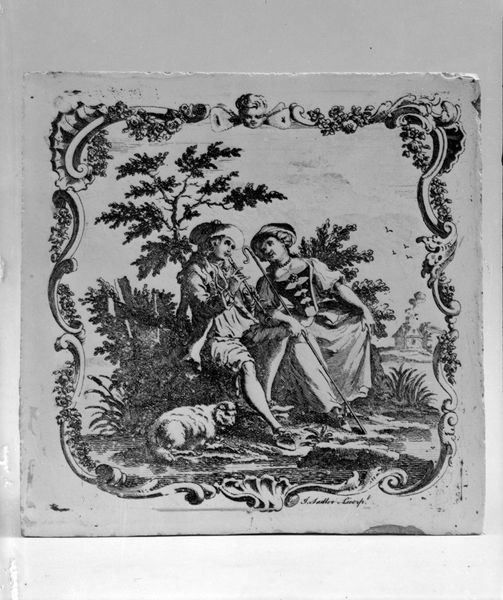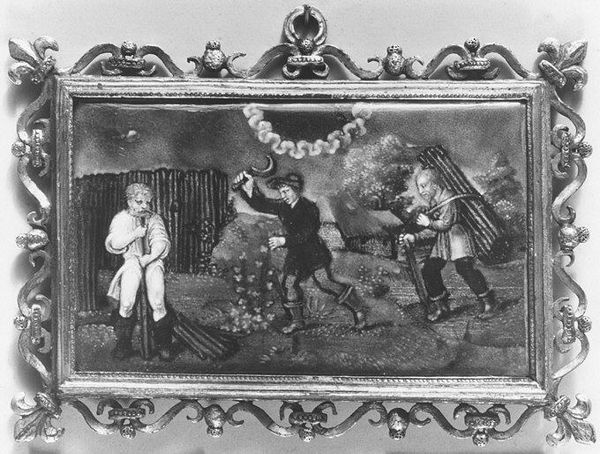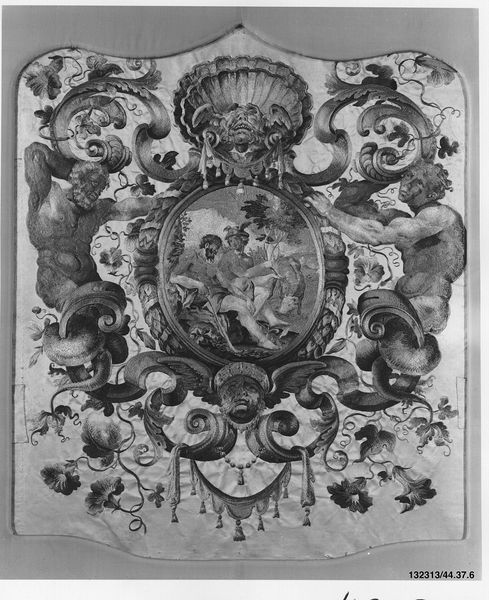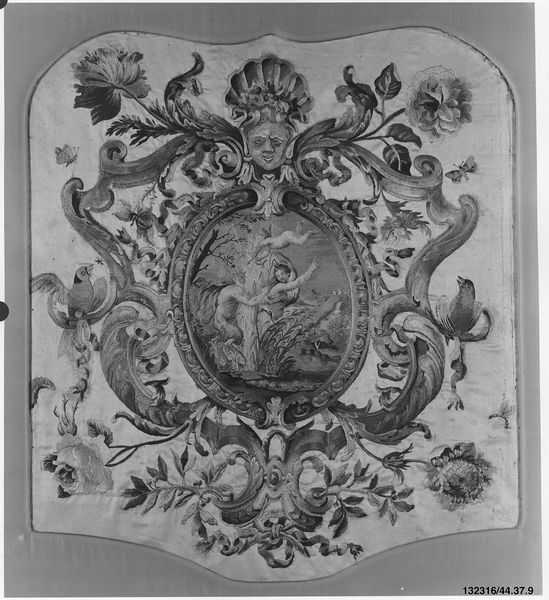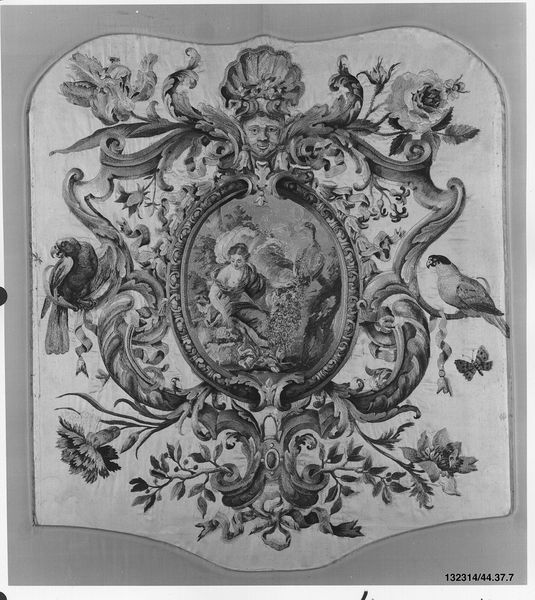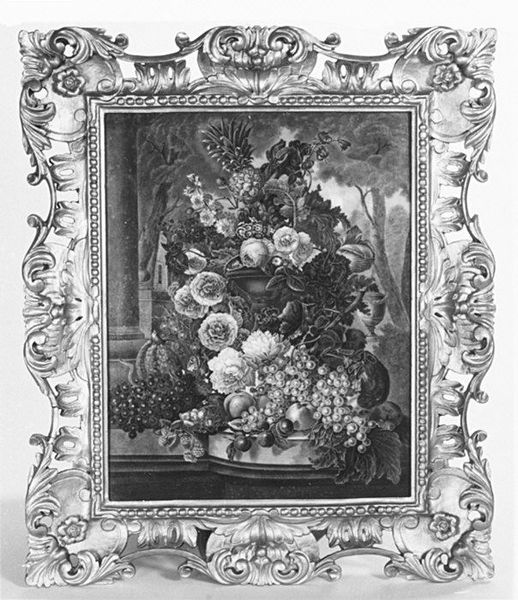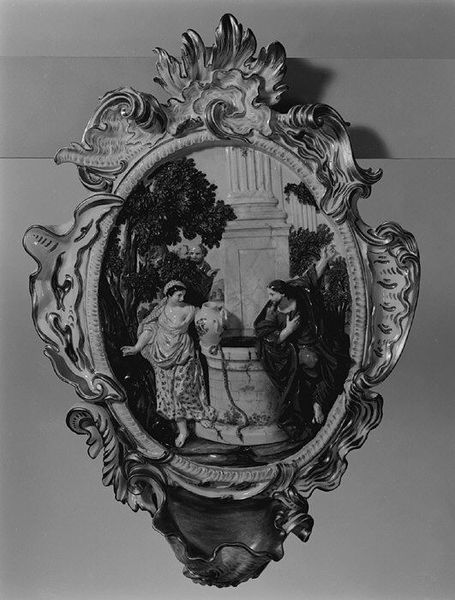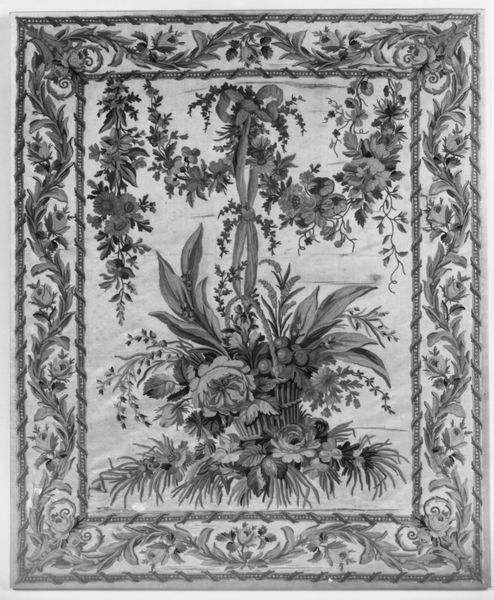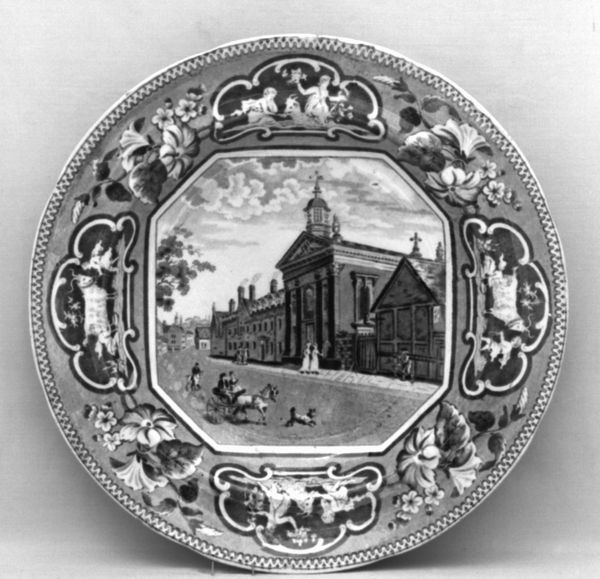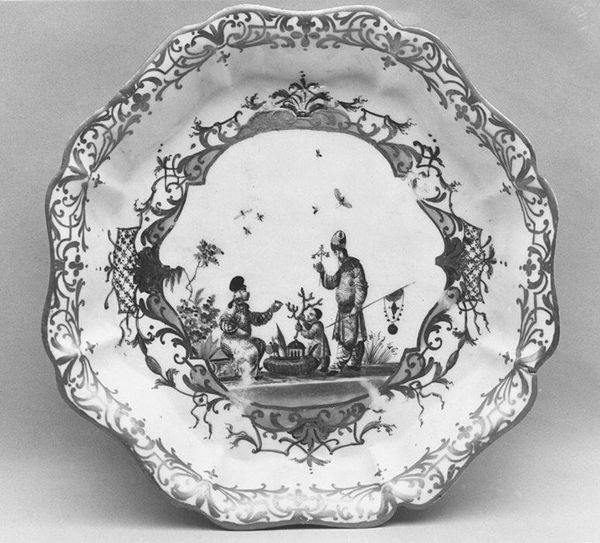
weaving, textile
#
portrait
#
weaving
#
landscape
#
textile
#
figuration
#
genre-painting
#
decorative-art
#
rococo
Dimensions: 32 × 25 in. (81.3 × 63.5 cm)
Copyright: Public Domain
Francois Boucher created this tapestry of a Boy with Bagpipe in France during the 18th century. It's a pastoral scene framed by an elaborate floral border, typical of the Rococo style, which flourished under aristocratic patronage. This tapestry, and others like it, embodies a yearning for an idealized countryside, a retreat from the complexities of urban life. But it also tells us about the social structures of the time. Boucher was a favorite artist of Madame de Pompadour, King Louis XV’s mistress, whose influence shaped artistic tastes and commissions. Tapestries such as this one would adorn aristocratic homes and signal social status. They also served as a form of soft power. By commissioning works that celebrated the French countryside, the monarchy sought to reinforce a vision of a harmonious kingdom under its benevolent rule. To fully understand this work, we might consult period documents, such as estate inventories and fashion magazines, to reconstruct the domestic spaces for which it was intended. Boucher's "Boy with Bagpipe" shows us that art always speaks to the social and institutional conditions of its time.
Comments
No comments
Be the first to comment and join the conversation on the ultimate creative platform.
